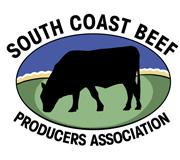The National Livestock Identification System (NLIS) reflects Australia’s commitment to biosecurity and food safety and provides a competitive advantage in a global market.
Under the Stock Identification Regulation 2005, the person in charge of receiving cattle at a property with another property identification code (PIC) – ie the buyer of the cattle – must ensure that the cattle are transferred to their PIC on the National Livestock Identification System (NLIS) database within 48 hours of the movement.
If you trade only via saleyards and sell directly to abattoirs, you do not need to open an account, as the saleyards and abattoirs will carry out all transfers for you. But if you buy (or sell) animals direct from another farm you will need to either update the database yourself or advise the purchaser of the devices on animals you have sold them.
So other than a regulatory requirement, why is it in your interest to scan your animals and update your database?? Especially since there does not seem to have been any action taken for breaks in lifetime traceability of any livestock.
1. It can save you money. Some tags lose their information and cannot be read. Scanning will identify these, allowing you to insert a new tag before the animal goes to market. This could save you around $25 per animal if the saleyard has to tag the animal before sale.
2. It helps you make more informed decisions by maintain continuity in your own record keeping. If an animal loses its management tag, the NLIS tag may be used to identify the animal so that it can be retagged for continuation of record keeping. Recording health issues of animals, progeny health and weight gain and any parasite treatments helps inform good management decisions.
3. Identify any missing – or visiting – animals. One of our members recently got notification from the abattoir that a steer scanned in their lot was not on their database. It took quite a while to track the animal’s roamings down, and turned out to be an imposter from the neighbour’s. The member reimbursed the neighbour, and presumably the member would wish the same response had their steer been sold by the neighbour.
4. Stay safe. Save getting your elbows bashed on your crush by scanning a tag rather than trying to get in the animal’s ear to read it manually. Few will stand still while you do it.
Don’t have a crush? Don’t worry- put your herd in the race or a small pen and scan away.
5. Track down previous owners. We recently scanned a member’s herd and found one third of them were not on the member’s database.This means a loss of traceability and more difficulty finding out who then vendor was should you like their stock and wish to buy more, or find a disease appearing in purchased stock. This is especially useful if you have purchased your property with existing stock.
